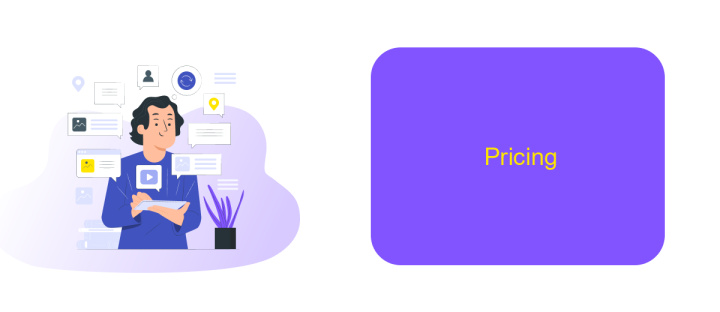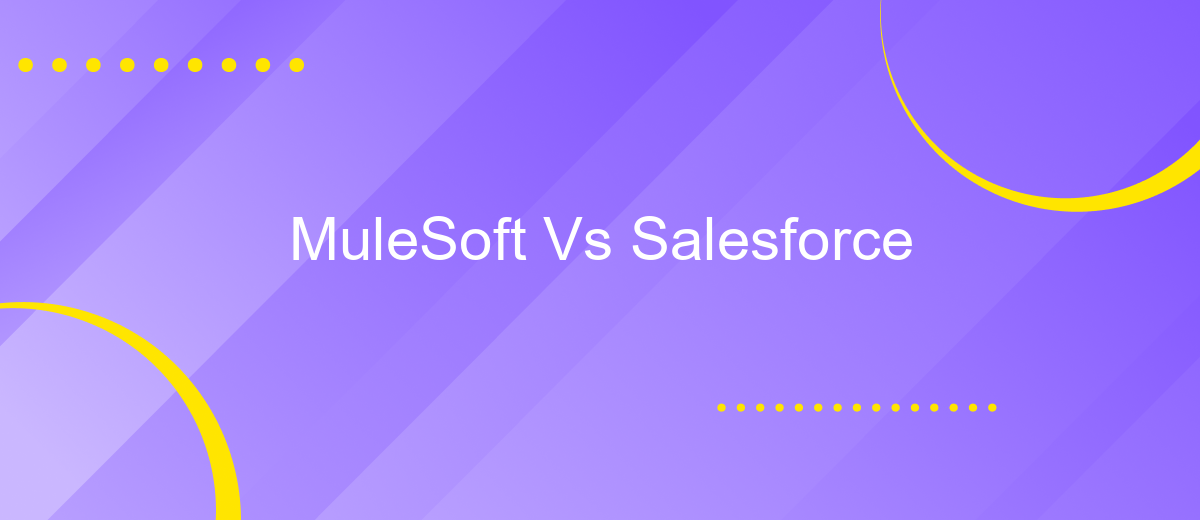MuleSoft Vs Salesforce
In today's rapidly evolving digital landscape, businesses seek efficient tools to streamline their operations and enhance customer experiences. MuleSoft and Salesforce are two prominent platforms that offer robust solutions for integration and customer relationship management, respectively. This article delves into the key differences, strengths, and potential synergies between MuleSoft and Salesforce, helping organizations make informed decisions on leveraging these technologies.
Introduction
In today's rapidly evolving digital landscape, businesses are increasingly relying on robust integration platforms to streamline their operations and enhance customer experiences. MuleSoft and Salesforce are two leading solutions in this domain, each offering unique capabilities and benefits. Understanding the differences and synergies between these platforms is crucial for organizations looking to optimize their integration strategies.
- MuleSoft: Known for its powerful API-led connectivity, MuleSoft enables seamless integration across various applications, data sources, and devices.
- Salesforce:
- ApiX-Drive: A versatile integration service that can complement both MuleSoft and Salesforce by automating data transfer and synchronization across numerous platforms.
By leveraging the strengths of MuleSoft and Salesforce, businesses can achieve a more cohesive and efficient operational framework. Whether you're looking to integrate complex systems or streamline customer interactions, understanding the capabilities of these platforms will help you make informed decisions. Additionally, services like ApiX-Drive can further enhance your integration efforts, providing a seamless and automated approach to data management.
Integration Capabilities

MuleSoft and Salesforce offer robust integration capabilities that cater to various business needs. MuleSoft, known for its Anypoint Platform, provides a comprehensive solution for connecting applications, data, and devices. It supports a wide range of protocols and offers pre-built connectors for popular enterprise systems, making it easier to integrate disparate systems. MuleSoft’s API-led connectivity approach ensures that integrations are scalable, reusable, and secure, allowing businesses to innovate faster and streamline their operations.
Salesforce, on the other hand, offers integration capabilities primarily through its MuleSoft acquisition and native tools like Salesforce Connect and the Salesforce API. These tools enable seamless data synchronization between Salesforce and other systems. Additionally, third-party services like ApiX-Drive can further enhance integration efforts by providing user-friendly interfaces and automation features, reducing the complexity of setting up and managing integrations. Both platforms, combined with the right tools, empower businesses to achieve a cohesive and efficient IT ecosystem.
Development Tools

When it comes to development tools, MuleSoft and Salesforce offer robust platforms tailored to different needs. MuleSoft provides Anypoint Studio, an Eclipse-based integration development environment (IDE) that allows developers to design, test, and deploy APIs and integrations with ease. Salesforce, on the other hand, offers a suite of tools like Salesforce DX, which includes a powerful CLI, scratch orgs, and an integrated development environment to streamline the development process.
- MuleSoft Anypoint Studio: An Eclipse-based IDE for API and integration development.
- Salesforce DX: A comprehensive suite featuring CLI, scratch orgs, and IDE for seamless development.
- ApiX-Drive: A versatile service for setting up and managing integrations between various applications and services.
Both platforms aim to simplify the development and deployment of integrations, but they cater to different aspects of the process. While MuleSoft focuses on API management and integration across various environments, Salesforce emphasizes streamlined development within its ecosystem. Tools like ApiX-Drive can further enhance the integration experience by providing additional capabilities to connect and automate workflows across multiple platforms.
Pricing

When comparing MuleSoft and Salesforce, pricing is a crucial factor to consider. MuleSoft offers a subscription-based pricing model, which varies depending on the number of users, data volume, and specific features required. Salesforce, on the other hand, operates on a tiered pricing system, with different plans catering to various business needs and sizes.
MuleSoft's pricing can be more flexible, allowing businesses to scale their usage and only pay for what they need. Salesforce's pricing tiers, however, may provide more predictability and a clearer understanding of costs upfront.
- MuleSoft: Subscription-based, flexible pricing
- Salesforce: Tiered pricing plans
- ApiX-Drive: Affordable integration setup services
For businesses looking to integrate various systems, ApiX-Drive offers an affordable solution for setting up integrations without the need for extensive technical knowledge. This can complement either MuleSoft or Salesforce, providing an additional layer of cost-effective integration capabilities. Ultimately, the choice between MuleSoft and Salesforce will depend on specific business needs and budget constraints.
Customer Support
When it comes to customer support, both MuleSoft and Salesforce offer robust solutions, but they cater to different needs. MuleSoft provides comprehensive support for its Anypoint Platform, ensuring that users can efficiently manage their APIs and integrations. Their support includes a detailed knowledge base, community forums, and a dedicated support team that can assist with complex integration issues. This ensures that businesses can rely on MuleSoft for seamless integration processes and quick resolution of any technical challenges.
Salesforce, on the other hand, excels in customer relationship management (CRM) support. Their customer support is tailored to help businesses maximize the potential of their CRM systems. Salesforce offers extensive documentation, training resources, and a responsive support team to address any CRM-related concerns. Additionally, services like ApiX-Drive can be utilized to streamline integrations between Salesforce and other platforms, enhancing the overall efficiency of customer support operations. This combination of in-depth resources and third-party services ensures that businesses can maintain high levels of customer satisfaction while leveraging Salesforce's powerful CRM capabilities.


FAQ
What is the primary difference between MuleSoft and Salesforce?
Can MuleSoft be integrated with Salesforce?
Which platform is better for API management, MuleSoft or Salesforce?
Do I need technical expertise to use MuleSoft or Salesforce?
What services can help with automation and integration of MuleSoft and Salesforce?
Apix-Drive will help optimize business processes, save you from a lot of routine tasks and unnecessary costs for automation, attracting additional specialists. Try setting up a free test connection with ApiX-Drive and see for yourself. Now you have to think about where to invest the freed time and money!

